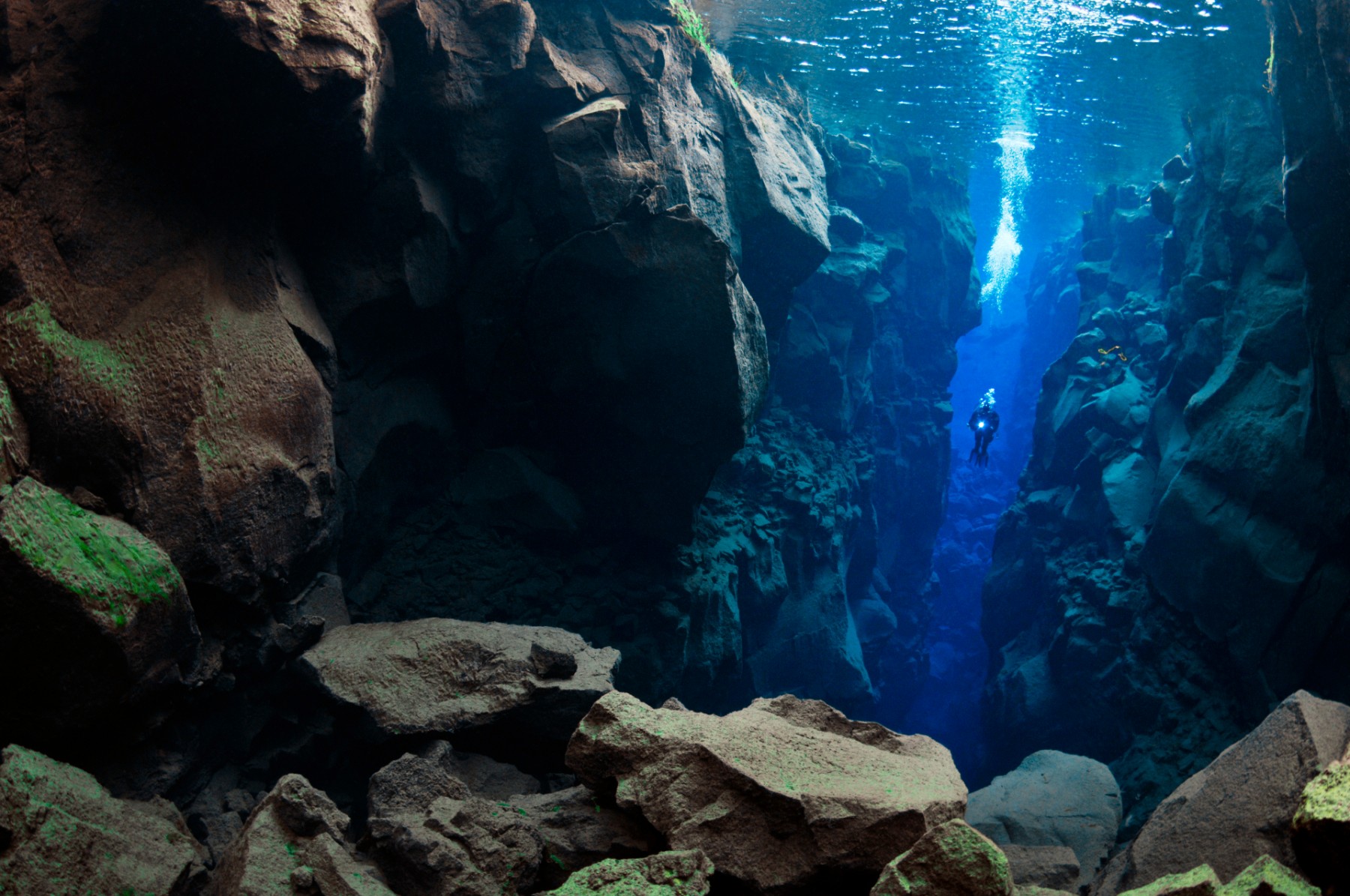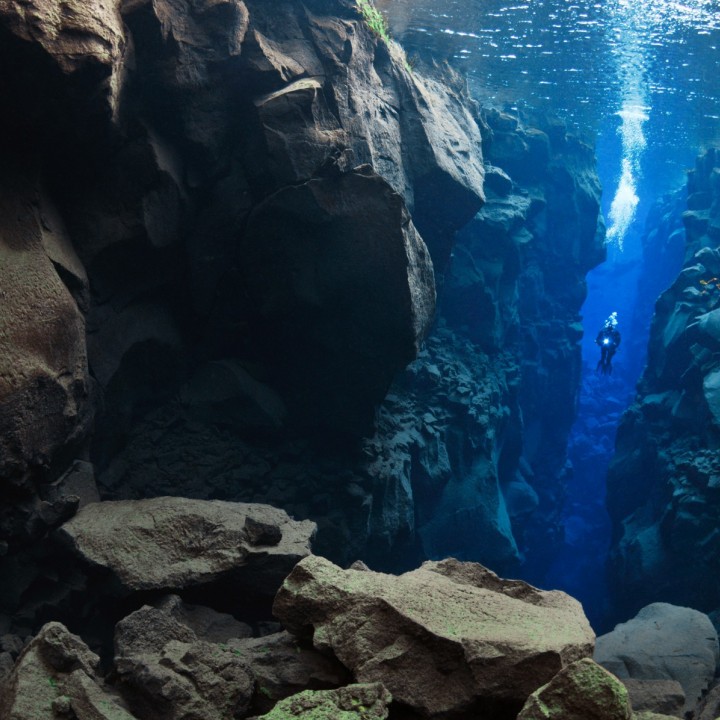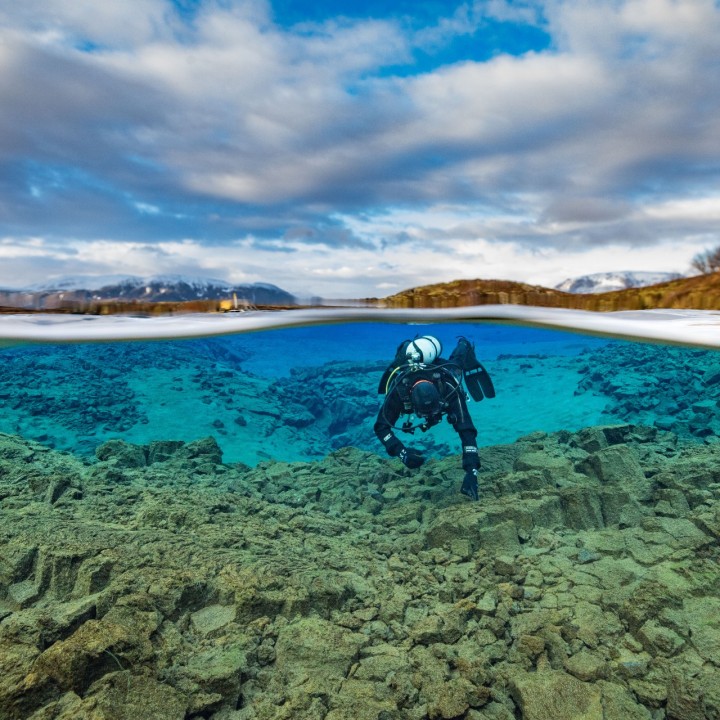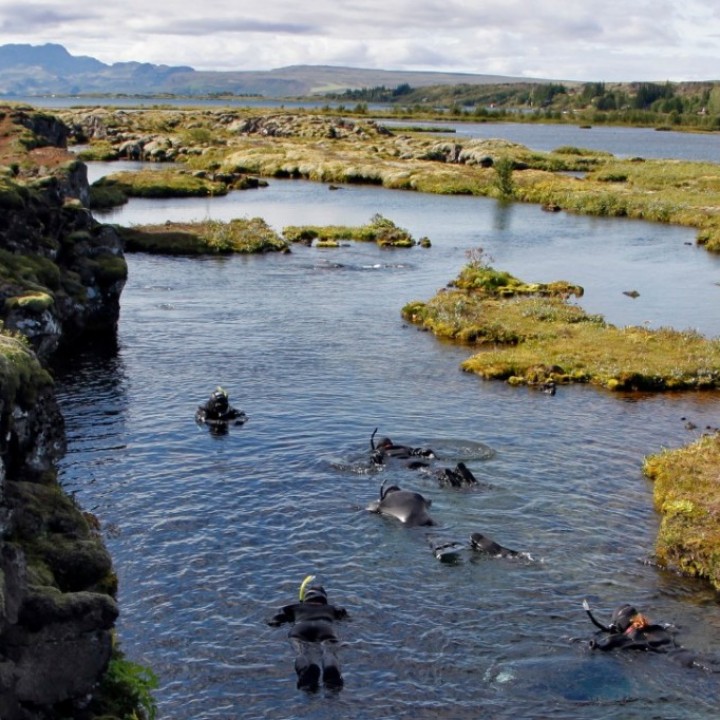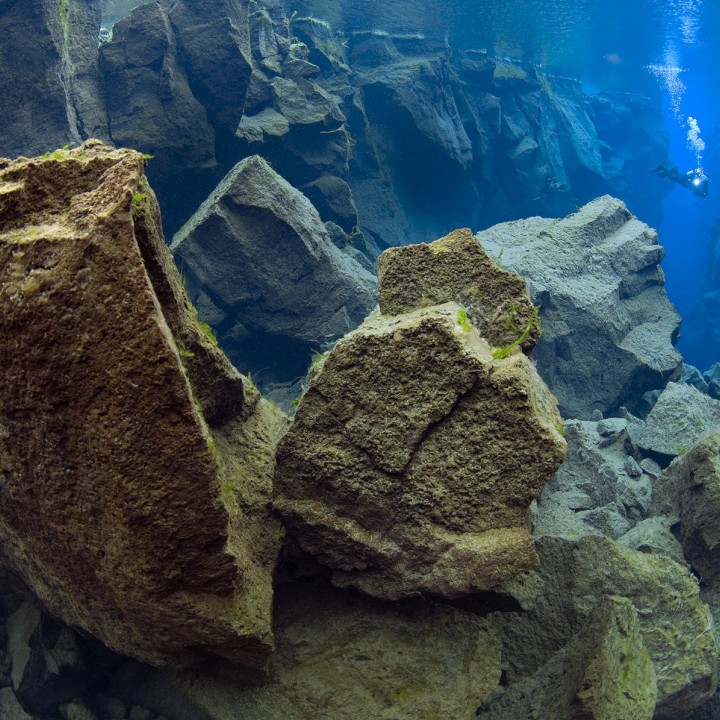Guest blog by Chris Ayliffe of, Traveo.
There’s no escaping the fact that Iceland is one of a kind. From the active volcanism to the towering glaciers, hot springs, spectacular northern lights, otherworldly ice caves and much more, there is a tremendous amount of adventure to be had.
Few, however, other than diving enthusiasts, are aware of the rare and unique wonder of the natural world at Silfra. Carved in time by the active volcanism beneath the feet of Icelanders, this stunning yet bizarre fissure is the only place in the world where you can dive directly between two tectonic plates.
It’s a testament to the raw power that Iceland feels rumbling beneath the soils on a day to day basis. With an ever shifting landscape, our great country will continue to create new wonders and adventures to be had. But, Silfra in particular is one that absolutely needs to be at the top of your bucket list, and I will explain why.
In this blog, I’ll explain the history and geology of Silfra, as well as illustrate the powerful forces of nature that created and crafted the Silfra fissure. I’ll also cover the fantastic once in a lifetime activities you can do here to bring home some memories you’ll never forget.
What is the Silfra fissure?
First of all, just to clear up some of the terminology, a fissure in this context is a rift formed by the cracking or splitting of tectonic plates along fault lines. Silfra, meaning “silvery”, happens to sit on a fault line between two major tectonic plates, Eurasian and North American.
For you and me, it’s an incredibly rare opportunity to visibly see the impact of continental drift with your own eyes. As part of the wider Thingvellir National Park region along Iceland’s Golden Circle trail, both plates are slowly pulling away from each other at a rate of roughly 2cm every year.
Though this doesn’t sound like a lot, over time it’s clear to see how Iceland is in effect, slowly being ripped apart by the intense forces of nature.
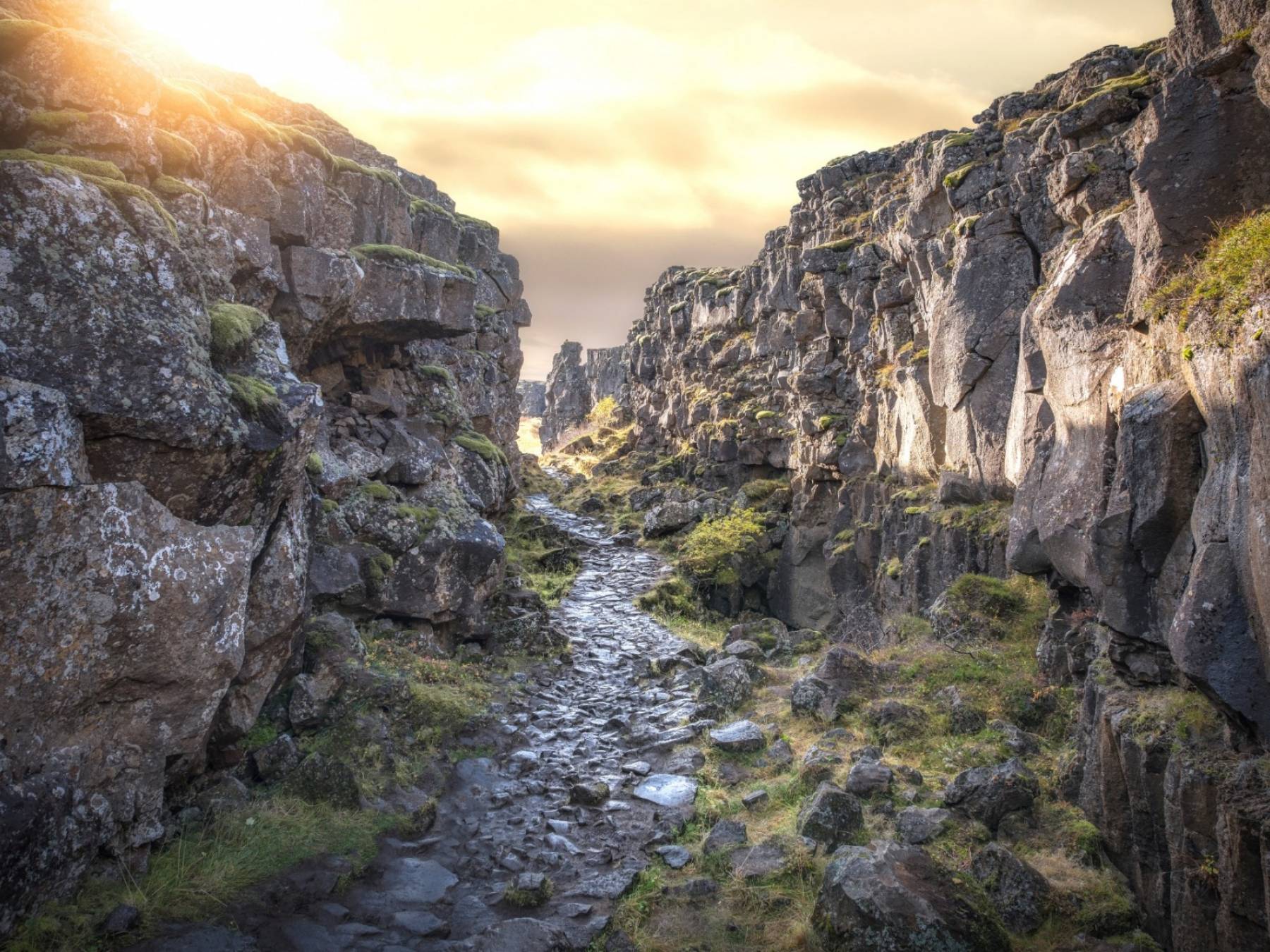
However, another part of the wonder of Silfra is the fact that the fissure actually cut into an underground spring filled with glacial meltwater from the nearby titanous glacier, Langjökull. What makes it more impressive, is the water is filtered through porous underground lava for 30-100 years before actually reaching the spring that feeds into Silfra directly.
Essentially, when you wade into Silfra, you’re basically diving into waters that started their filtration system into the spring while your Grandmother was being born!
The magic of this filtration system makes the waters extremely pure by the time it reaches the north end of Thingvallavatn (Thingvellir’s lake). As a result, for those daring to dive or snorkel in this ravine, you will find that it has the clearest water in the world, with visibility up to 100m (this just doesn’t happen!)
Adding to this mystical combination of geological movement and glacial fuel, is that due to the fact that freshwater is constantly filling the fissure, the water never freezes, remaining between 2°C – 4°C year round. Yes, even in the depths of a powerful and freezing Icelandic winter, you can still easily swim in this rare anomaly of the natural world.
What Created the Silfra Fissure?
As Iceland is known as the land of fire and ice, you better believe that volcanic activity was involved.
In fact, the rift actually formed in 1789 by a series of strong earthquakes accompanying the divergent movement of the two tectonic plates.
In english, a strong movement in the tectonic plates ripped this fissure into existence like the tearing of tissue paper.
As many of our travellers from across the world will know, such as those living in California, living on a major faultline doesn’t come without complications. In Iceland, it’s no different. If our dramatic and ever-changing history has shown us anything, it’s that the volatility of volcanism will shift and open fissures with the movement of the ground from the releasing pressures beneath us.
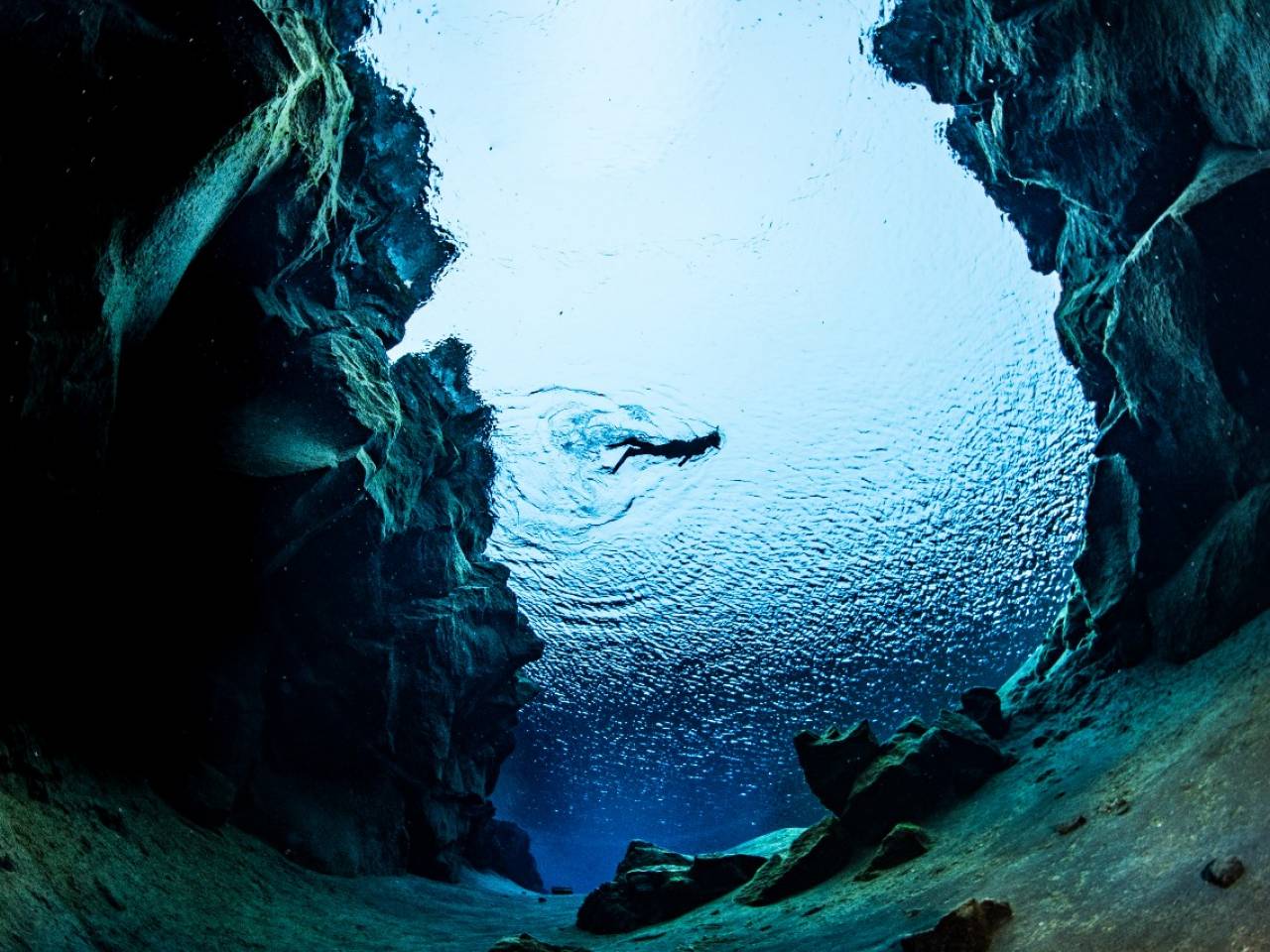
Now, that’s not to mean rifts are opening and closing across our country like a ‘whack a mole’ arcade game. It takes incredibly powerful activity which usually coincides with major volcanic eruptions to open fissures.
Most notably, in the history of Iceland is the Laki eruption in the western part of Vatnajökull National Park in 1783, which opened a fissure with such powerful lava flows that they allegedly rose to extraordinary heights over the course of a year.
Whereas in more recent times, the Westman Islands just off the South Coast of Iceland experienced an eruption accompanying a fissure opening from the Eldfell volcano located on the main island of Heimaey in 1973.
Silfra is what is known as a “living” dive site. This means that due to the powers of nature that it sits on, it is constantly undergoing both large and small changes.
Though the fissure is widening very incrementally over time, which is much less noticeable (unless you have a lot of time on your hands!), the more drastic changes have actually occurred to affect the depth of the rift during earthquakes when rocks and boulders can fall into the crack of Earth.
Astonishingly, this constant flux creates new tunnels, caverns and a full underwater terrain unlike anything else you will see on the planet. Simply put, if you’re wanting to try diving anywhere, this is the place to do it.
Why Do You Need to Go Diving in Silfra?
Now, onto the juicy part. If the origin and explanation got your adrenaline pumping, the experience is going to blow your mind.
Let me just say it again, you will be diving directly between two tectonic plates. Read that back to yourself one more time. Now, do you remember your science classes about continental drift where you cast a glance at the chalkboard while drawing on your friends pencil case? You’re basically getting the chance to experience a rare phenomenon between two of the world’s most major tectonic plates none of your teachers would have known possible.
This is the chance to descend into one of the most unusual and spectacular world's few have known is there and even less have braven themselves to explore.
Even Dive In magazine mentioned Silfra on their 13 Best Dive Sites in the World in 2024 article!
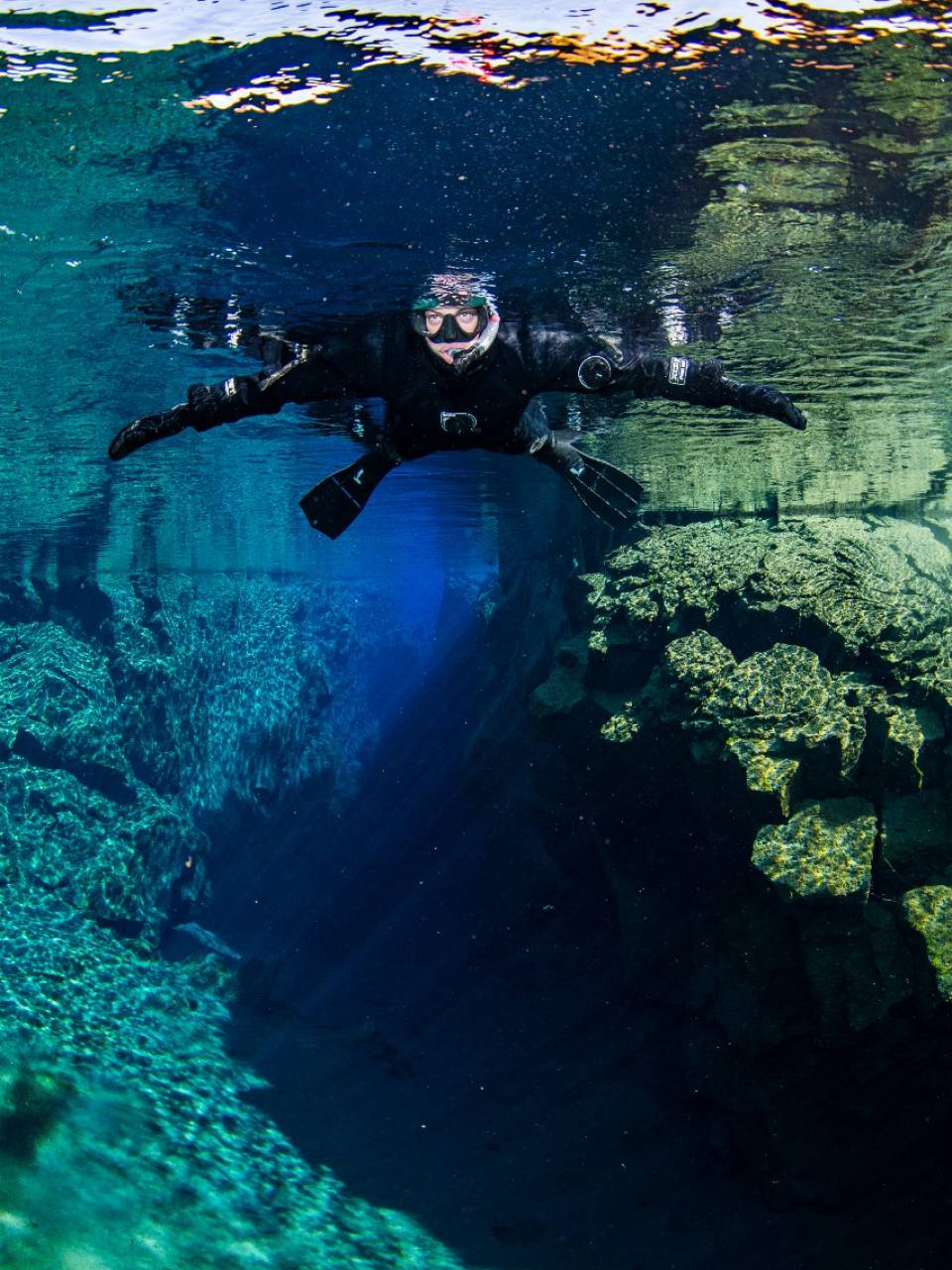
As humans, it’s in our very nature with an insatiable desire to explore everything from the outer limits of space to very depths of the ocean. By taking the rare opportunity to either go diving or snorkelling in Silfra, you’re adventuring into a natural wonder unlike anything else in the world making it easily one of the best things to do in Iceland. Sound tempting?
The relatively small surface area (approximately 600m by 200m), hides from your initial gaze a cave that extends this great pool to some fascinating depths of up to 63m at the time of writing.
Though, due to the volatile nature of a fissure, diving in all cave and overhead environments is strictly prohibited in Silfra, with the cave especially dangerous. It’s narrow passages and instability can lead to some precarious situations, so your guide will ensure you are safe and aware at all times.
Silfra has been divided into four main sections: Silfra Big Crack, Silfra Hall, Silfra Cathedral, and Silfra Lagoon. Though typically theatrically named, the first three sections are incredibly deep and expansive canyons which the names simply don’t do justice to. Deep below your paddling feet, there are a series of dark and uncharted cave systems, which will continue to flux and change in time with the movements of the plates.
The fourth section (Silfra Lagoon) is a shallow lagoon streamed with beautiful colours from the fields of algae that line it. In contrast to the other three sections, the lagoon can be the perfect place to watch in awe at the abundance of colours beneath you as well as gasping at the ability to see the entire span of the lagoon (100m) with perfect clarity. This section can be made even more special under a clear weather day with the long daylight hours of the midnight sun.
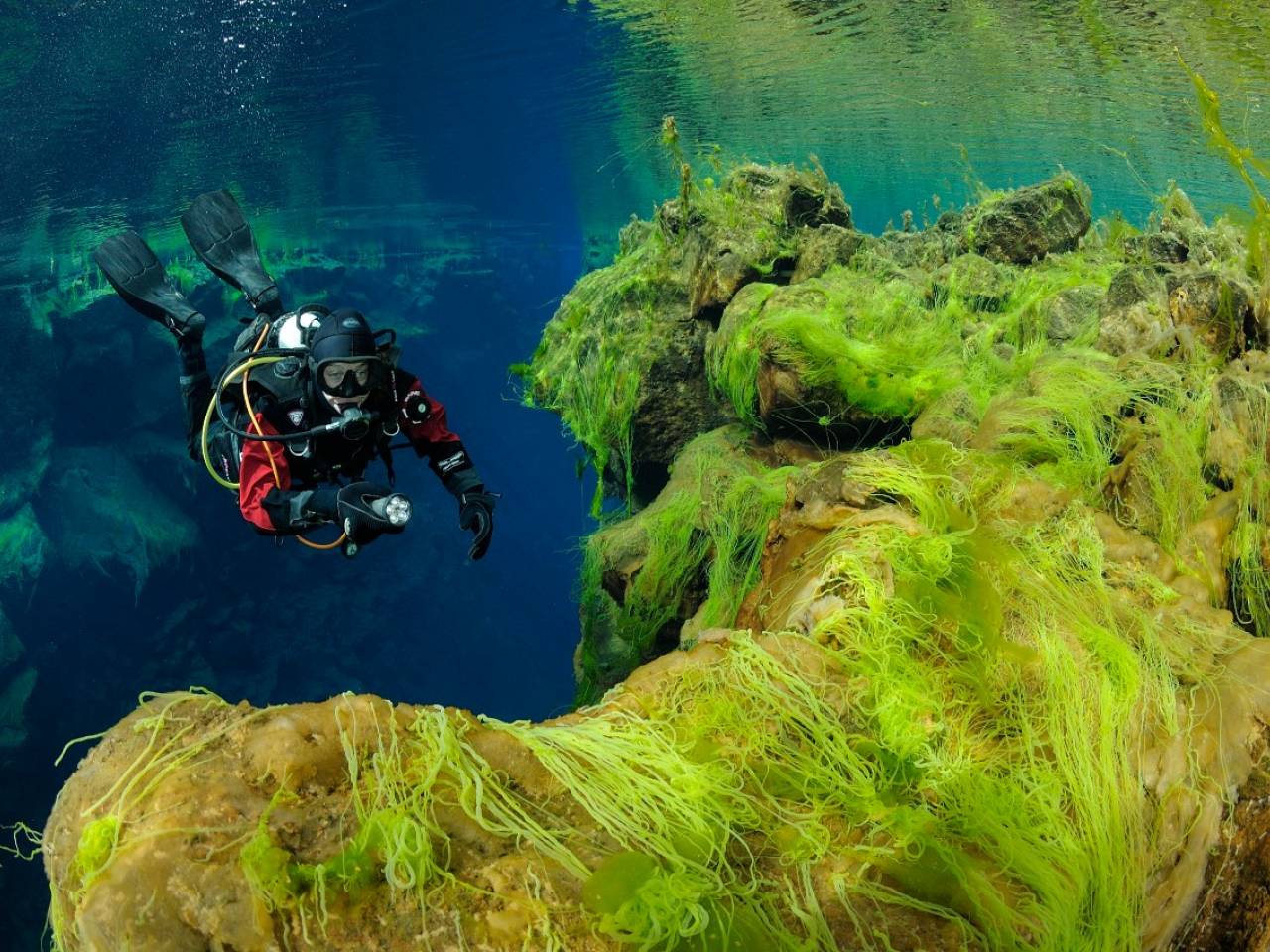
You’re basically taking a dive into history through an active region of intense geological power combined with the pure glacial water created eons ago. The adventure lies in the unknown, and daring to explore will reward the brave traveller with one of the best experiences on the planet for those keen to journey into the Silfra waters.
Let me set the scene for you. Imagine reaching the ravine and gazing down into the still clear silvery waters that earn its name while your guide begins to explain a series of instructions for your adventure as well as walking you through all the necessary safety information.
You’ll then pull on your dry suit, goggles and the rest of your gear, depending on whether you’ve chosen to try snorkelling or diving. Once ready, you’ll be shown into the fissure with the cold waters against you, tingling your senses with your adrenaline now starting to become realised.
Taking your time to adjust to your surroundings, you’ll then be taken to explore the astonishing four sections of the rift for some of the most incredible and unbelievable experiences imaginable. You’ll watch the darkened chambers below, the geological rock formations surrounding you and gaze in awe at the colourful algae and bizarrely clear waters outstretched in every direction.
Dare yourself to be brave and take the opportunity to uncover another world active beneath your very feet. It’s a journey you won’t regret.
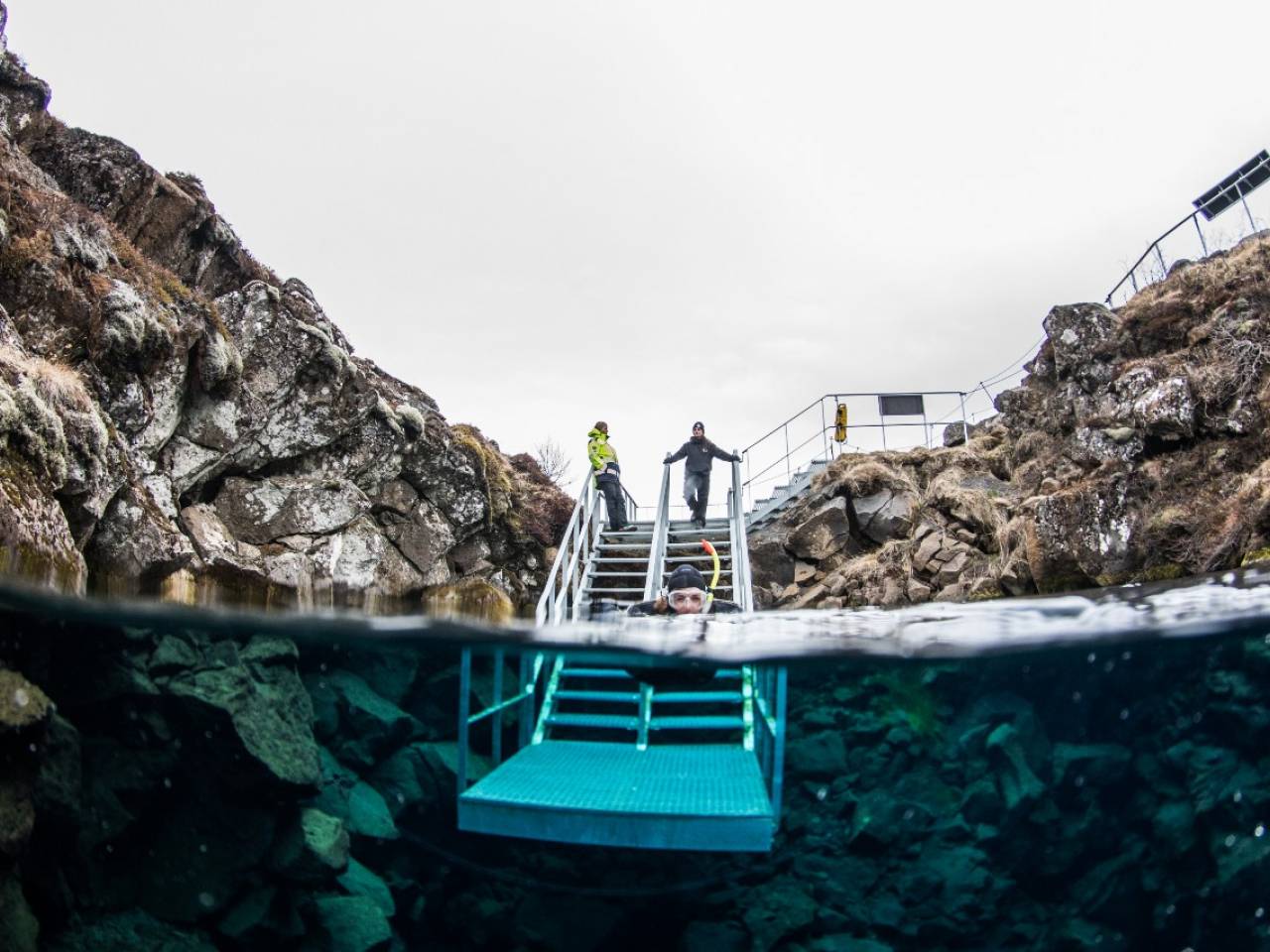
Is Diving in Silfra Safe?
In an answer, yes absolutely!
All of our tours are managed by expert guides who do this tour on a daily basis. Their experience of the rift, the gear, travellers main concerns and what is safe to explore and what isn’t is second to none.
What’s more, your guide will stay with your group throughout your experience and is there to enhance this adventure of a lifetime. If any issues arise they will be right on hand to resolve it immediately and have been thoroughly trained to do so.
To ensure safety at all times in the rift, there is a rule to not dive more than 18m in depth with the average dive between 7m and 12m. This is an incredible depth to immerse yourself fully in the rift and feel the raw power and craftsmanship of nature around you.
Relax, you’re in safe hands!
Conclusion
Silfra is a location you can’t find anywhere else on the planet. To explore a rift and a world unknown to most, in uncharted cavern systems and an environment alive with the beating heart of the volcanism below, is truly the top bucket list item you probably never thought possible. Descending into history, through the clearest pure waters on the planet torn by the forces of nature is surreal to do, even if you’re lucky like our guides to do it countless times.
Much like watching the Northern Lights in Iceland, you need to add a diving tour or a snorkelling tour to your journey of adventure. After all, what’s a little adventure with embracing the challenges of the unknown.
Come and explore this bucket list treat with us, and take away some unbelievable memories.
